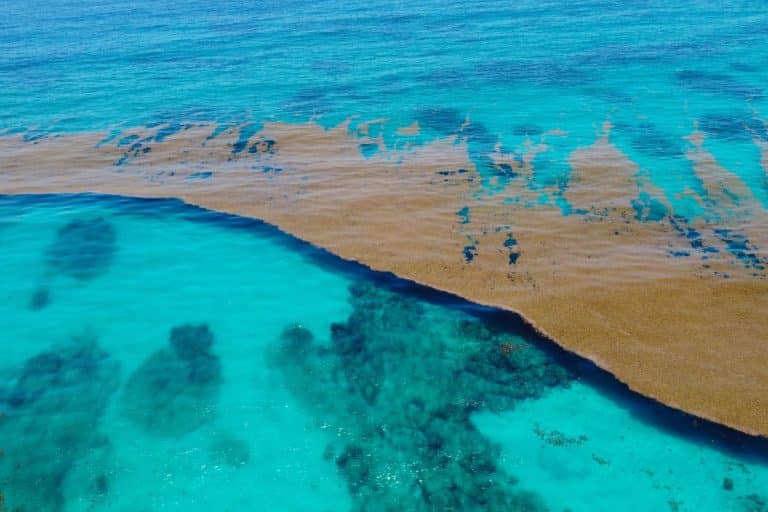Although it is not a novel occurrence, scientists believe that this year’s 5,000 mi (8,000 km) long blob may rank among the largest ever observed.
So, what exactly is sargassum, and is this enormous growth due to climate change?
Sargassum is a brown, leafy seaweed that is covered in air spaces that resemble berries. Unlike other marine plants, this kelp reproduces on the surface of the water and floats on the open sea. Its buoyancy is due in part to the air-filled pockets.
According to the National Oceanic and Atmospheric Administration (NOAA), the matted brown algae mass stretches for miles across the ocean, providing a breeding ground, food source and habitat for fish, sea turtles and seabirds.
“It’s a dynamic, constantly changing set of pieces of this large mass,” said Rick Lumpkin, director of the Physical Oceanography Division at NOAA.
Although essential to the ecosystem, when it comes ashore it can seriously affect tourism. The gasses, which smell like rotten eggs, are released when the kelp on the beaches rapidly decomposes under the hot heat.

As it covers the beaches with almost a meter of seaweed, it can also damage the marine environment of the coastal areas.
Because the algae were not carefully monitored until 2011, scientists are not entirely sure what triggered the bloom. However, factors such as human waste and climate change could be responsible for the excessive growth.
“We do know that to get a lot of seaweed, you need nutrients, and you need sunlight. Of course, as you get close to the equator, there’s going to be more sunlight,” said Mike Parsons, a professor of marine science at Florida Gulf Coast University.
According to experts, the faster development of the belt on the western side could be explained by agricultural runoff that seeps into the Amazon and Orinoco rivers before flowing into the ocean.
A 2021 study found that nitrogen levels in sargassum were on average 35% higher than in samples taken 30 years earlier. This was caused by agricultural runoff and sewage.
“It’s almost like sargassum is a barometer for how global nitrogen levels are changing,” Brian Lapointe, an algae specialist, told reporters last week.
Seaweed probably grows more quickly when the ocean is warmer. Blooms may also be impacted by changes in weather patterns, ocean currents, rainfall, and drought.
“It may be the entire belt is fed more some years than others by dust that contains iron and other nutrients that comes from the Sahara Desert,” said Lumpkin, from the NOAA.

